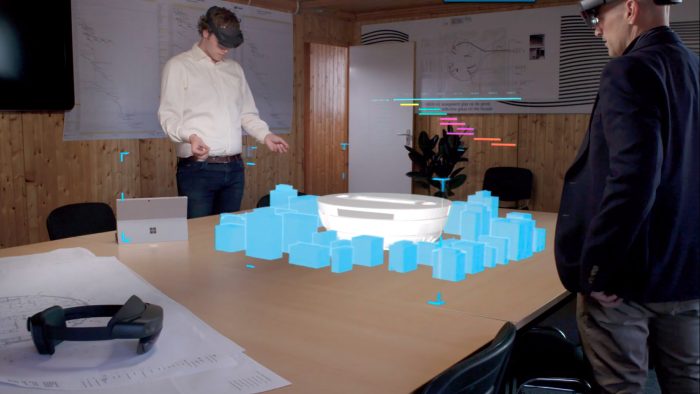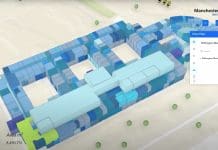Brian Robins, VP, Product and Industry Marketing at Bentley Systems, Inc. discusses digital twins and their advancement beyond BIM
Over the next 12 to 18 months, digital twins will take centre stage, advancing rapidly beyond building information modelling (BIM), enabling asset-centric organisations to converge their engineering technologies, operational technologies, and information technologies into a portal or augmented/immersive experiences. This has become possible due to the confluence of 3D visualisation, reality modelling, mixed reality (AR/VR), and geotechnical engineering, providing an immersive and integrated view of infrastructure assets below ground, on the surface, and above ground. The result will be better-informed decisions to improve network/service availability, enhance passenger and worker safety, ensure regulatory compliance, and reduce environmental impact.

Digital twins will span the entire asset lifecycle. For CapEx projects, project digital twins will provide a risk-free way of simulating construction, logistics, and fabrication sequences with the supply chain, as well as optimising design for passenger flows and enabling stakeholders to visualise emergency evacuations and resilience against flooding and/or extreme weather conditions. For OpEx, performance digital twins will truly become the organisation’s 3D/4D operating system, combining data from continuous surveys, photogrammetry, LiDAR and sensors, and tracking changes to assets on a timeline, enabling those responsible for asset management to roll the digital representation of the infrastructure asset and related real-world conditions forward or backward in time.
With the application of artificial intelligence (AI) and machine learning (ML), we envisage immersive digital operations, providing analytics visibility and insights to enhance the effectiveness of operations staff and help them anticipate and head off issues before they arise and react more quickly with confidence. With the application of drones, robots, and AI-based computer vision, we envisage the automation of inspection tasks via a living digital twin, enabling experts to conduct inspections remotely, vastly increasing productivity and leveraging the knowledge of scarce resources.
Openness
Project delivery and owner-operator organisations should be able to realise these advancements within the next 12 to 18 months. However, there are challenges to scale the technologies from proof of concept to network and city scale, as well as federate with other/national digital twins. The key success factor will be openness.
The reality is that data in the GIS or fit-for-purpose CAD/BIM tools is often siloed. Unless data can be aligned and synchronised, it will remain “dark data” and any digital twin will not have veracity or fidelity. The platform for digital twins must be an open connected data environment (CDE). We believe the monolithic single model or single source of truth will be superseded by an open CDE that will federate multiple live data sources and support a variety of form factors from mobile, web, and desktop in a hybrid cloud, and/or on-premises architecture supporting the office, jobsite, and field.
Having high-quality, trustworthy, and aligned data will not be useful if it is not accessible. Solutions will leverage and provide open-source libraries so that you can tailor digital twins to meet your projects’ unique specifications, providing infinite scalability and connectivity for a multitude of use cases and users. Data will be publishable in open industry standards to increase interoperability across platforms.
In the past two years, Bentley launched iModelHub, a cloud service that enables alignment, accountability, and accessibility of infrastructure digital twins, iModelHub aligns disparate digital components and synchronises changes with a trusted change ledger, capturing how, when, and by whom engineering data has been changed. Bentley also launched iModel.js, the first (and as far as we are aware only) open source library available on GitHub for accessing, creating, visualising, analysing, and integrating the information systems around a digital twin. Collaborating with the Centre for Digital Built Britain, Imperial College and University College London, Bentley is at the forefront of research and development in infrastructure digital twins.
Accelerating digital advancement
Bentley is an acknowledged technology innovator, having created the iModel®, a container for engineering data, that has been recognised as the most effective and open technology for exchanging deliverables, sharing and distributing information regardless of the source and format.
Many of Bentley’s users credit our advancements in digital workflows, digital components and digital context for their project success and/or better performing assets. Organisations like Maha Metro and Crossrail have set the agenda and direction for the industry.
Maha Metro’s implementation of Bentley’s OpenRail solution used iModels as for the final delivery due to its ability to provide reliable, long-lasting asset models for reference. Maha Metro deployed a digital project delivery system through Bentley’s OpenRail CDE, which covers planning to performance stages of the asset lifecycle. Maha Metro configured the connected data environment to record all data spanning every lifecycle stage, with asset tags used to link Bentley applications with other software. This interoperability allowed documents and asset information to be linked to 3D models.
Crossrail recently worked with Bentley to create a blueprint for how to deploy a connected data environment, incorporating PAS 1192 workflows in a large-scale infrastructure project. The project included managing change and progressive assurance systems engineering methodologies. Together we established an industry first BIM Academy to on-board the project’s extensive supply chain which evolved into Digital Advancement Academies, providing best practices and knowledge transfer to the industry globally at scale.
Reality modelling is another area in which Bentley has excelled, helping smart cities like Helsinki create, geo-coordinate, and visualise 3D city models that form the basis for flood analysis and subsurface geotechnical engineering. Bentley was chosen by Microsoft as launch partner for mixed reality (AR/VR) devices that have been deployed on major construction projects for transportation, arenas and signature buildings. Microsoft also awarded Bentley the CityNext Partner of the Year highlighting our integration of digital workflows with Office 365 and Azure.
Brian Robins

VP, product and industry marketing
Bentley Systems
© 2019 Bentley Systems, Incorporated. Bentley, the Bentley logo, iModel, iModelHub, and OpenRail are either registered or unregistered trademarks or service marks of Bentley Systems, Incorporated or one of its direct or indirect wholly owned subsidiaries. Other brands and product names are trademarks of their respective owners. 21720 03/19













